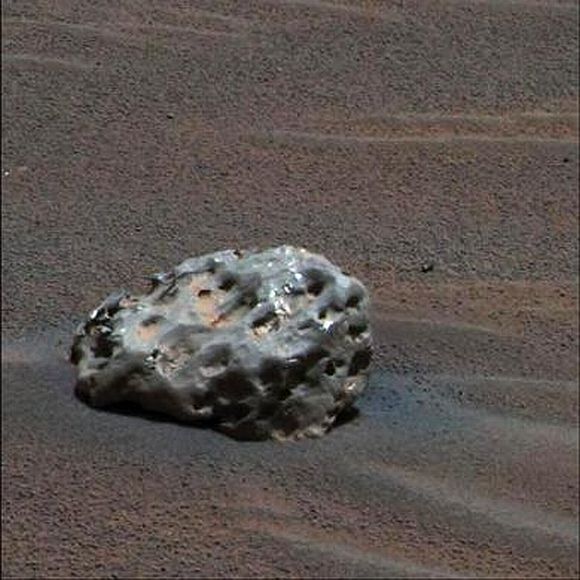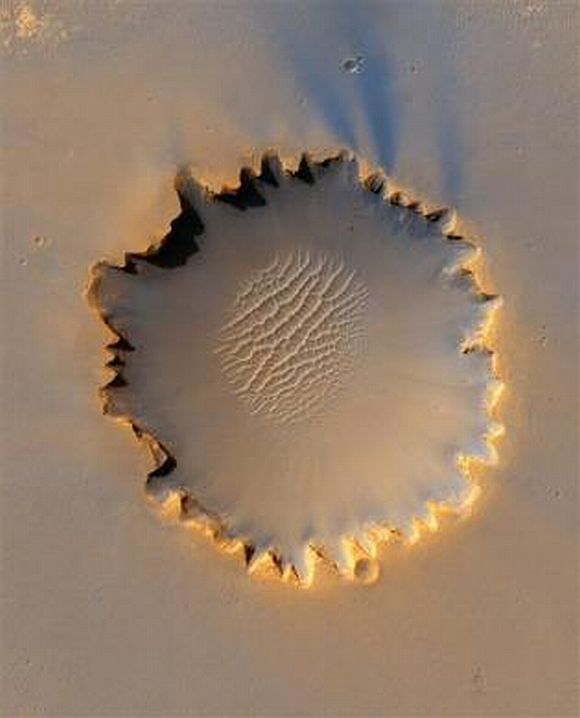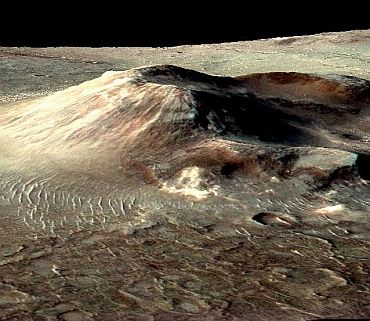
The newly discovered glass dune fields on Mars may be hotspots for life, as they are likely to have formed from interactions between magma and ice, or water, scientists have claimed.
The fields are spread across almost a third of the Red Planet's northern hemisphere. But dark sediments in the region have puzzled planetary scientists.
Now, researchers from Arizona State University, who used the European Space Agency's Mars Express orbiter to re-examine light radiated from the Martian plains, determined that the strange readings were caused by sand composed of glass.
Click NEXT to see more images...

"We're actually seeing glass particles, like glass sand," researcher Briony Horgan was quoted as saying by Astrobiology Magazine, a NASA-sponsored popular online science magazine.
"The only way to create an extensive glassy deposit like that is through explosive volcanism. This is the first direct evidence on Mars for explosive volcanism on a planetary scale," Horgan said.
When a Martian volcano erupts, the researchers said, the thin atmosphere and difference in pressure should make for some great pyrotechnics. But a fiery eruption alone won't guarantee glass. It takes an interaction with water or ice to manage that, they said.
Click NEXT to see more images...

"When lava or magma interacts with ice or water, it is quenched, which means it rapidly cools and solidifies," said Claire Cousins of the University of London.
"This rapid cooling prevents any crystals from growing, and so a volcanic glass is produced," said Cousins, who was not involved in the new research but has studied volcanic environments in Iceland and Antarctica as Martian analogues.
The glassy plains also show evidence of water-related weathering. As ice melted across the lowlands, it mixed with the strange sand to form an acid.
With enough exposure to the iron inside the sand, the chemicals would neutralise, which means that only a constantly renewed water source, like melting ice or snow, could cause the leaching the team saw.
Click NEXT to see more images...

Details on the newfound Martian landforms were published online in the journal Geology.
The glassy expanse may not be the best location to search for life. But it could lead to more promising environments, the researchers said.
"We know searching for organisms in the northern lowlands is difficult. I think the better place to go would be those source regions, the ice-magma interactions," Horgan said.
Referring to hydrothermal systems and subglacial lakes, she said, "Those have been identified as places where biosignatures could have been preserved."
If a volcano erupts beneath a glacier, the heat could form huge subglacial lakes. "It's the perfect place for microbes.
"A nice, warm, safe place for microbes to hang out, with lots of chemicals around to munch on," Horgan said.
...